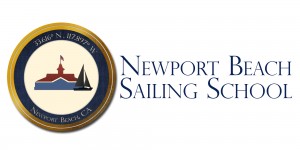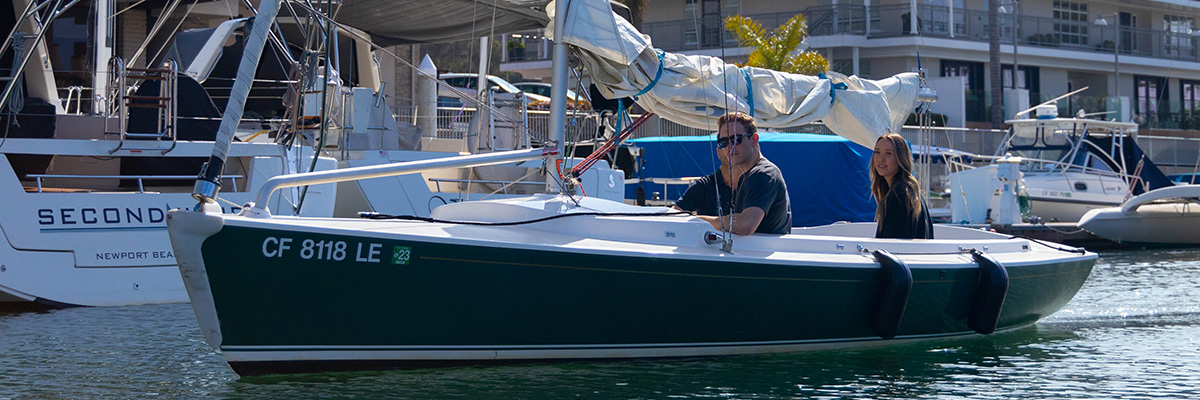ASA 101, Basic Keelboat Course
Three 4-hour or two 6-hour days on a Harbor 20
Course Price and scheduling
Group Course
Total of three students–You and two other students, who we match you up with.
Group Course: $755 per student
Private Course
A private course for you and 1, 2 or 3 other people you know, based on your schedule.
Private Course 1 Student: $1525 total.
Private Course 2 Students: $1625 total.
Private Course 3 Students: $1725 total.
Information about the Course
101 Overview
In this course, you will learn to skipper a sloop-rigged keelboat by day, in light to moderate winds and sea conditions. Learn basic sailing terminology, parts and functions, helm commands, basic sail trim, points of sail, buoyage, seamanship and safety including basic navigation rules to avoid collisions and hazards.
For a full list of all 52 topics (knowledge and skills) that will be covered click below.
Basic Sailing Terminology
1. Describe and identify the following sailboat parts and their functions:
- Hull
- Deck
- Transom
- Keel
- Mast
- Boom
- Gooseneck
- Bow
- Stern
- Helm / Tiller /Wheel
- Rudder
- Cockpit
- Cabin
- Standing Rigging
- Shroud
- Spreader
- Chainplate
- Headstay / Forestay
- Backstay
- Stanchion
- Lifeline
- Pulpit
- Winch
- Cleat
- Block
- Fairlead
- Fender
- Docklines
2. Identify and describe the functions of the following sails, sail parts and sail controls:
- Mainsail
- Jib / Genoa
- Head
- Tack
- Clew
- Foot
- Luff
- Leech
- Downhaul / Cunningham
- Batten
- Batten Pocket
- Bolt Rope
- Hank
- Running Rigging
- Halyard
- Mainsheet
- Jibsheets
- Boom Topping Lift
- Boom Vang
- Telltale
- Outhaul
- Traveler
- Shackle
- Roller Furler
3. Define the following terms:
- Port
- Starboard
- Forward
- Aft
- Beam
- Ahead
- Astern
- Abeam
- Windward
- Leeward
- Draft
- Freeboard
- Heel
- Weather helm
- Skipper
- Helmsman
- Crew
Maneuvers & Points of Sail
4. Explain and identify using diagrams the following maneuvers, points of sail, and other terms:
- Head-to-Wind
- No-Sail Zone
- Closed Hauled
- Close Reach
- Beam Reach
- Broad Reach
- Run
- Sailing-by-the-Lee
- In Irons
- Luffing
- Port Tack
- Starboard Tack
- Tacking
- Jibing
- Stand-on
- Give-way
5. Explain and utilize correctly the following helm commands and crew responses:
- “Heading Up”
- “Bearing Away”
- “Ready About” —– “Ready” —– “Helms a-Lee” (or “Coming About” or “Tacking”)
- “Prepare to Jibe” —– “Ready” —– “Jibe-Ho” (or “Jibing”)
Navigation Rules
For items 6 through 12, describe, using diagrams as appropriate, the applicable rules for a 25-foot recreational sailing vessel, as found in the USCG Navigation Rules and Regulations Handbook. Identify the “stand-on” and “give-way” vessel in each situation.
6. Look-out, Rule 5.
7. Sailing vessels with the wind on different sides (starboard / port), Rule 12(a)(i)
8. Sailing vessels with the wind on same side (leeward / windward), Rule 12(a)(ii)
9. Sailing vessel on port tack cannot determine windward sailing vessel’s tack, Rule 12(a)(iii)
10. Overtaking (Rule 13)
11. Power-driven vessels approaching each other head-on (Rule 14)
12. Power-driven vessel with another power-driven vessel on starboard side (Rule 15)
13. Describe appropriate actions to be taken when sailing in the vicinity of commercial traffic, including responding to a danger signal.
Aids to Navigation
14. Identify and state the purpose of lateral aids to navigation by color, shape & numbering, including preferred channel markers.
15. Identify safe water, information and regulatory markers.
Safety Gear & Procedures
16. List the federally required equipment for a recreational sailboat of 25-feet in length.
17. Identify the location and color of navigation lights used by a recreational vessel of 25-feet in length.
18. Describe the purpose of a Float Plan, give examples of information contained therein and to whom it should be submitted.
19. Describe when and to whom boating accidents must be reported.
20. State the Federal Blood Alcohol Content (BAC) limit for vessel operation.
Safety Equipment
21. Demonstrate the proper use of a lifejacket or personal flotation device (PFD).
Sailing
A Certified Sailor has successfully demonstrated his or her ability to:
Rig/hoist/set sails safely and correctly to obtain proper sail trim using the following lines and controls, if available on the practice vessel
22. Halyards and/or furling devices
23. Downhaul or Cunningham
24. Outhaul
25. Boom Vang
26. Mainsheet
27. Jibsheets
28. Winches
29. Traveler
30. Lower/furl/stow sails and coil/flake/stow lines properly
Without coaching or assistance, verbalize appropriate commands and demonstrate competence, safety and good seamanship in the role of Skipper / Helmsman during the maneuvers listed in elements 31 – 42. Honor all aids to navigation and use properly the basic Navigation Rules. Ensure sails are trimmed correctly and the vessel is in control at all times.
31. Depart dock or mooring fully ready to get underway safely
32. Select and maintain a given tack and course
33. Demonstrate how to get out of “irons”
34. Head Up
35. Bear Away
36. Sail Close Hauled
37. Sail on a Close Reach
38. Sail on a Beam Reach
39. Sail on a Broad Reach
40. Sail on a Run
41. Tack
42. Jibe
43. As crew, give appropriate verbal responses and perform correct actions during the maneuvers listed above.
Crew Overboard
44. Describe and demonstrate the correct actions to be taken while under sail from the time a person falls overboard until safely recovered.
Return & Secure
45. Return to dock or mooring
46. Secure vessel, using appropriate mooring/dock lines, fenders, etc.
Knots
Describe the purpose of, and construct without assistance in a timely manner, each of the following knots and hitches:
47. Figure-8 Knot
48. Square (Reef) Knot
49. Clove Hitch
50. Round Turn & 2 Half Hitches
51. Cleat Hitch
52. Bowline
Prerequisite – None
Boat utilized and description – Harbor 20
The Harbor 20 is a performance day sailor with classic good looks and plenty of room in the cockpit to make it easy for a small group to learn how to sail. The mainsail is fully battened and the furling jib is self-tacking. There is an electric motor to help you get out of the marina.
Boat location – Balboa Marina, Newport Beach, CA
The boat will be docked at the Balboa Marina where our office is located. This marina has some of the best facilities and is one of the best destinations in Southern California.
- Ample free parking
- Bathrooms and showers
- Two great restaurants with full bars – SOL Mexican Cocina & Tavern House Kitchen and Bar
- Starbucks across the street
- Gas station and minimart across the street
- Subway across the street
What’s included
- ASA 101 textbook “Basic Keelboat Made Easy”
- Fuel, insurance, and safety gear (including life jackets)
Cost Matrix to Reschedule a Class
Call us at (949) 209-9931 with any questions or to book by phone.

